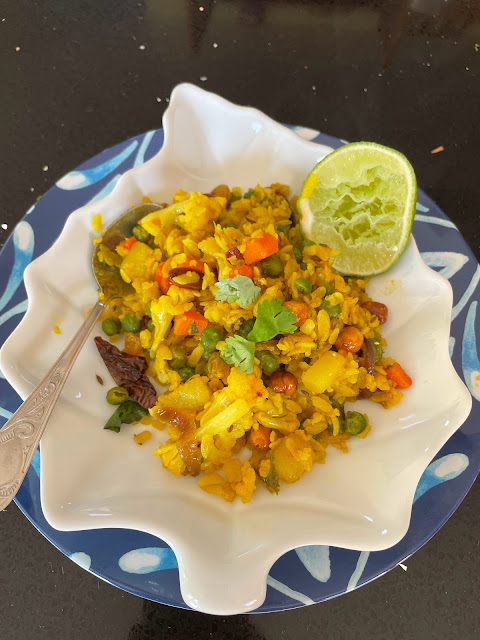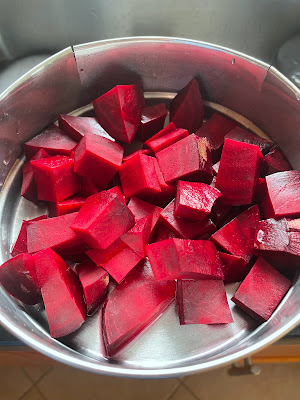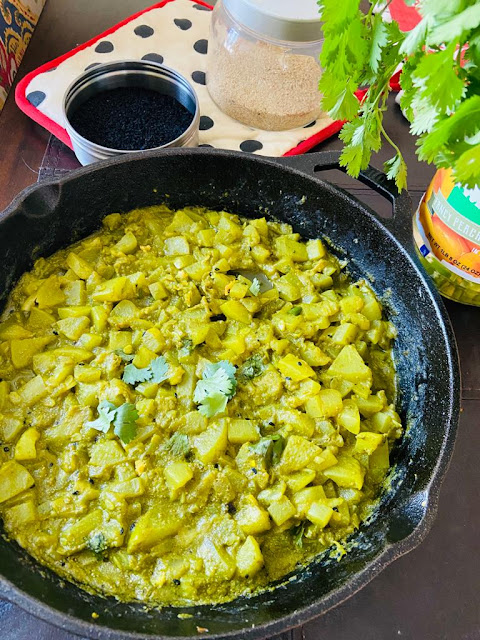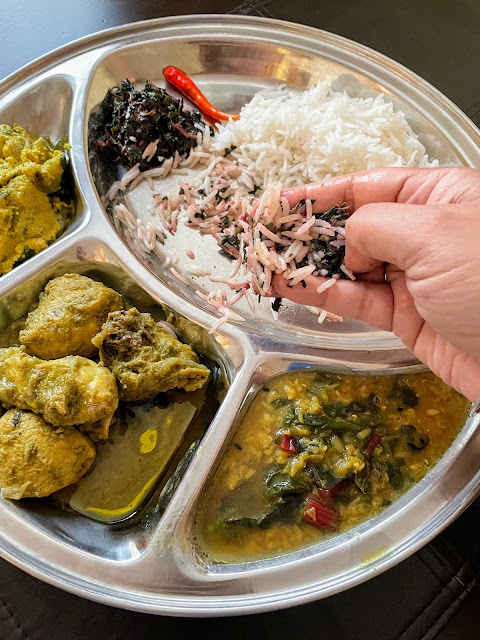Chirer Pulao | Poha the Bengali way
Bengali Chirer Pulao or Chirar Polao is largely similar to a Poha, with small differences like the former does not usually have kari patta, is sweeter and is overall Bong. Made with flattened rice, called chire or poha, the Bengali version is studded with vegetables like potatoes, cauliflower, carrots and sweet peas in winter. Garnished with fried peanuts or cashews, coriander leaves and a squeeze of lime it is a sweet and tart delight, prefect for breakfast.
Food happiness is when your food takes you back to a happy place. It is like a short vacation to a place where you will probably never return to or at least not for now. The few minutes in your mind makes up for it and the warmth of the memories are enough to piggyback on for rest of the day. Like this Chirer Pulao today took me back to my home in the small town that holds a special place in my heart. I will never be able to go back to that home and the sepia toned memories, now colored in my mind, makes it all the more special.
Winter is a season of beauty and fresh vegetables in the plains of Bengal and nowhere else it makes as much as a show as it does in the smaller towns and villages.
In the small town that we lived, every house or rather quarter/bungalow had a stretch of overgrown lawn in the front and a patio at the back called uthon. The uthon which was usually cemented had a few trees, a koltola (an area for washing clothes and utensils) and a water storage tank called choubachcha, as water supply through the pipes was only twice a day and water had to be collected in large quantity for later use. I loved our uthon with its huge mango tree and spent most of the winter sitting there under the sun with my books.
The front lawn however was a different story. Depending on the interest of the dwellers, the front lawn could be a fully maintained vegetable farm producing everything from potatoes to cauliflowers or a flower garden that could put a prize nursery to shame or even a rectangular badminton lawn.
Unfortunately our front lawn was none of these. It was just a large expanse of green grassy lawn from the gate to the front porch bordered by orange marigolds and shadowed by a huge banyan tree in a corner. The banyan tree took all the attention, praised for shade and breeze in summer and blame for blocking the sun in winter -- oi ashwatha gaach wala bari ta was how our house was identified.
Towards the back of the lawn were a couple of guava trees, and a patch of kitchen garden on the side by the kitchen, tended by my mom. Her kitchen garden in winter boasted mostly of juicy red tomatoes, some carrots and coriander. Not much compared to the huge haul of vegetables that our neighbors would produce. However we did get the occasional cauliflower and potatoes as gifts from the neighbors.
Even otherwise, vegetables at the nearby haat were as fresh. All local. All organic. Smelling of earth, air, water and manure. I don't know if winter vegetables just tasted better in their texture and taste but I was way more fond of cauliflower, carrots and sweet peas than the summer veggies of parwal and lauki!
So in winter, Chirer Pulao studded with tiny cauliflower florets, orange jewel like carrot pieces and emerald green sweet peas was a favorite for breakfast or school tiffin.
As far as I go Chirer Pulao is largely similar to a Poha, with small differences like the former does not have kari patta, is sweeter and is overall Bong. The experts may differ. My Mother made chirer pulao with a tadka of cumin seeds and finished it with lime juice and fresh coriander leaves. Sometimes she seasoned it with mustard seeds and curry leaves. It would be a little sweet and tart. That chirer pulao would be studded with crunchy brown fried chinebadam pale on the inside, alu bhaja -- finger length potatoes fried and soft, crunchy florets of cauliflower sautéed to a soft golden brown and luminescent green jewel like sweet pea motorshuti . It was a simple dish, I thought.
The first time I tried to make it on my own in the US, my self-esteem took a good beating. The chirer pulao turned into a chirer khichuri. And it all happened in the split second that I was searching for the mustard seeds while the poha was soaking. I did not know of a term called "mise en place" and I did not know I was using thin poha. It was the wrong kind. The thick poha stands a better chance of holding its own and is the poha of choice for Chirer Pulao.
Having survived that tragedy, I have been making the chirer pualo the way my Mother makes and it is still a favorite. I add more vegetables than the Poha and I also add cooked Oats at times to the same recipe,






































